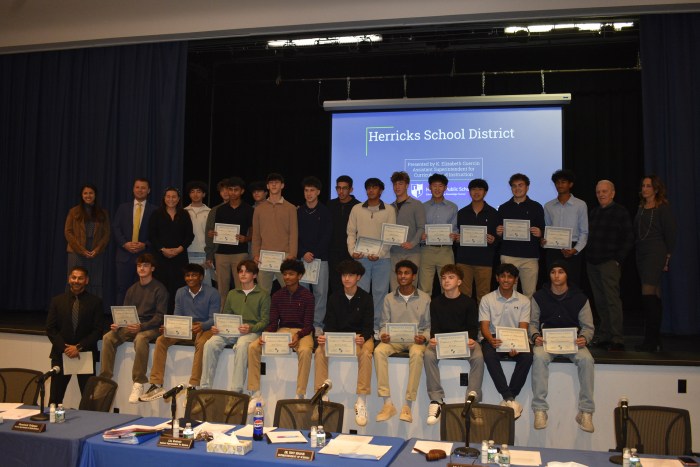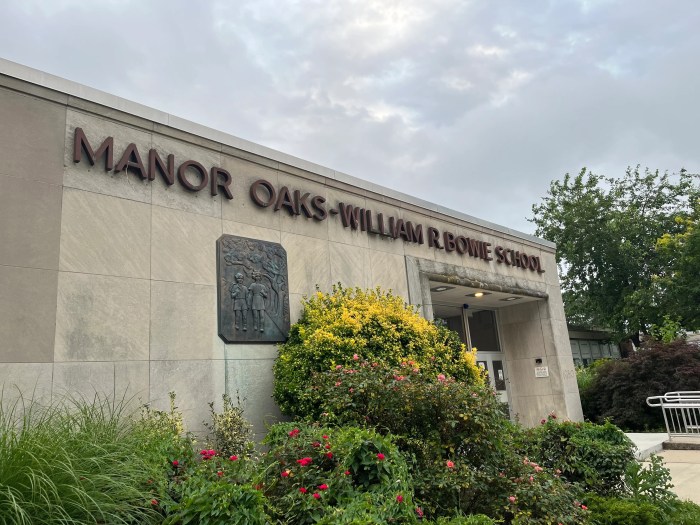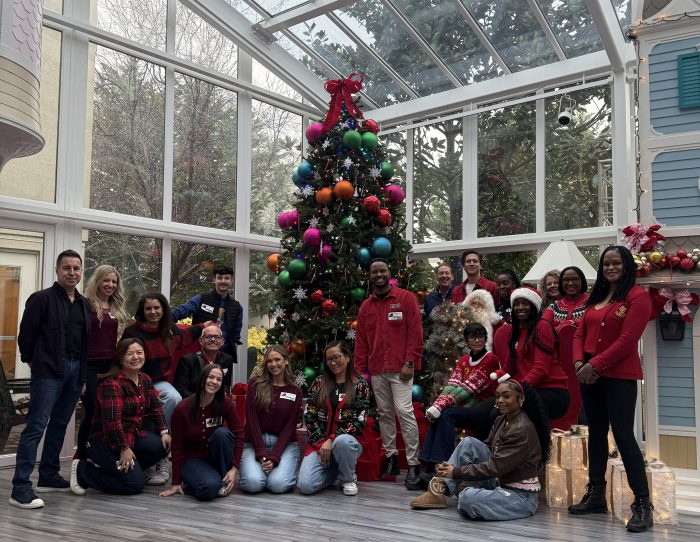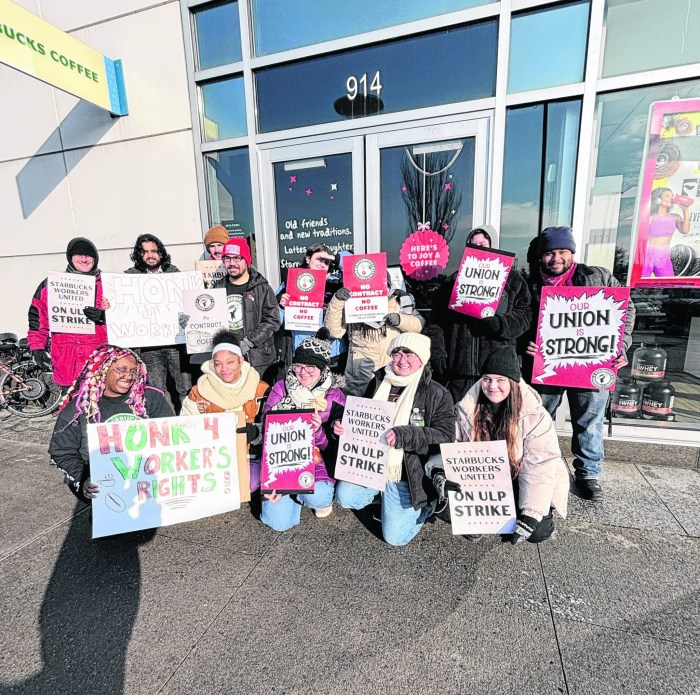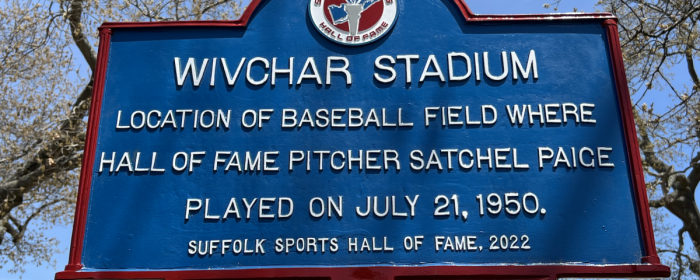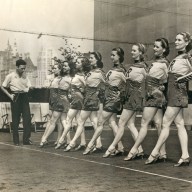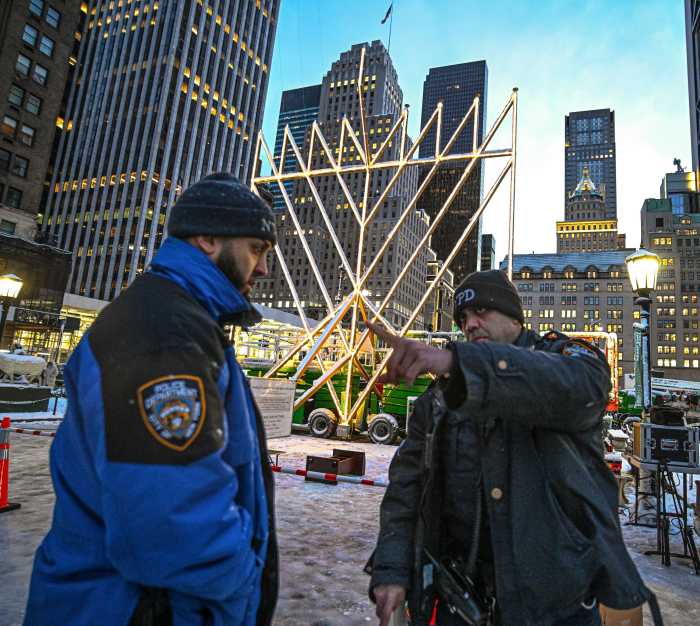Approximately 12,000 trees that shade Garden City in the summer and rain piles of leaves in the fall are owned by the village, many of them growing out of the median strip between the street and the sidewalk.
On the night of March 23, the Garden City Environmental Advisory Board held a meeting to discuss how the village can continue to care for these trees, the benefit of the trees to the city and what role the trees have played in the development of this village; including how it got its “Tree City USA” title from the Arbor Day Foundation Program.
The meeting started with a slideshow of photos submitted by residents who wanted to share their favorite tree.
While the trees are nice to look at, and have many benefits for the village, how they all got there is no mystery. It was in 1869 when Alexander Turney Stewart bought 9,000 acres of treeless land; what was then called the “Hempstead Plains.” The newly purchased land was called “Stewarts Folly.” On this land, he brought in thousands of trees on the train, planted the trees, lined the roads, built hundreds of homes and a first-class hotel. Unfortunately, he did not live to see what would become Garden City.
To this day, these trees are important to the character of Garden City.
“Prior to the city being planned it was just the really flat land,” said EAB member Kelly Smith, the founder and director of the Institute for Social Work and Ecological Justice and an adjunct professor at Adelphi University and Columbia University. She was the host and planner of this event. “The Hempstead Plains had really thick sod and it was so solid that tree seeds weren’t able to penetrate it… So most of the time people thought it was useless to try to start planting things, but once they did start opening up the land for farming, it did open the soil for tree seeds.”
Included in the trees brought into today’s Garden City was trees imported from Europe that can still be seen today at the Garden City Hotel and some of the village’s dated houses.
And all these trees have more benefits than just making the village aesthetically appealing.
“A lot of times when I’m doing a live presentation and I ask the room, ‘who here knows what the benefits are of what the trees provide us,’ I usually get some pretty good answers,” said Vinnie Drzewucki, the Cornell University Cooperative Extension of Nassau County Horticulture, Urban and Community Forestry Subject Educator. “I always get they produce oxygen. A lot of times when I’m with school kids I get interesting answers, such as trees grow apples and we get to eat apples or that they produce wood and my house is built out of wood… And that’s all true. They are all benefits. But there are many more benefits.”
Environmental benefits of trees include an improved air quality, sequestered carbon, conserved energy by protecting surroundings from sun and wind, slowed climate change, cooled air through transpiration, moderated effects of the sun, wind and run, reduced storm water runoff and soil erosion and an improved habitat for wildlife.
“Many people don’t understand or realize that trees are essential for our existence here on the Earth,” Drzewucki said. “The reason we exist on this Earth is because of oxygen and trees play this role in changing Earth’s atmosphere starting 370 million years ago, changing it into an atmosphere that has an abundance of oxygen to the point that animals started to evolve.”
Drzewucki noted the escalation of de-forestation and tree removal, and how those actions have had devastating effects.
That is why maintaining and planting trees is essential to communities like Garden City.
And there’s even more than just ecological and aesthetic benefits when it comes to trees. Trees can reduce stress and mental fatigue, enhance mental health, reduce obesity, improve heart health and enhance recuperation rates. Trees can also enhance community pride, increase recreational opportunities, beautify public spaces, bring natural elements and wildlife habitats into urban spaces and even reduce crime.
“Planning for trees really paid off obviously in Garden City because you have many trees that are 100 years old or older and they are still in great health, and they’re providing great services every year,” Drzewucki said. “Garden City is one of few communities where the whole city was designed with trees in mind from the get-go.”
And in order to continue the tree vibrancy in Garden City, Paul Blake, the chairperson of the Board of Commissioners on Cultural and Recreational Affairs, discussed provisions in place to protect the village’s trees.
The most commonly planted trees are Tulip Trees, with bright green leaves that resemble tulips and turn golden yellow in the fall; Tree Lilac, with large clusters of creamy-white and fragrant flowers; Little Leaf Linden, which has heart shaped leaves that turn from light to dark green and yellowish, fragrant flowers; as well as the Hardy Rubber Tree that has a thick, glossy green leaf.
Because many trees are planted in medians between the street and the sidewalk, the village will often avoid planting Silver Maple, Magnolia, Willow, Poplar and Elm trees. While those trees are beautiful, the roots can disrupt the sidewalk.
Regulations to protect the village’s beloved trees include requiring a permit to cut down more than one tree in a 12-month period, barring anyone from removing a tree on village property and requiring a permit in order to plant a tree or shrub between the curb and property line, preventing undesirable trees in the median.
“Any resident who would like a tree can request one,” Blake said. “You just need to call us, drop an email or even better pop in and say hello. We do take requests, put them on our list and do our best to supply all the residents with trees.”
For more information, visit gardencityny.net.




